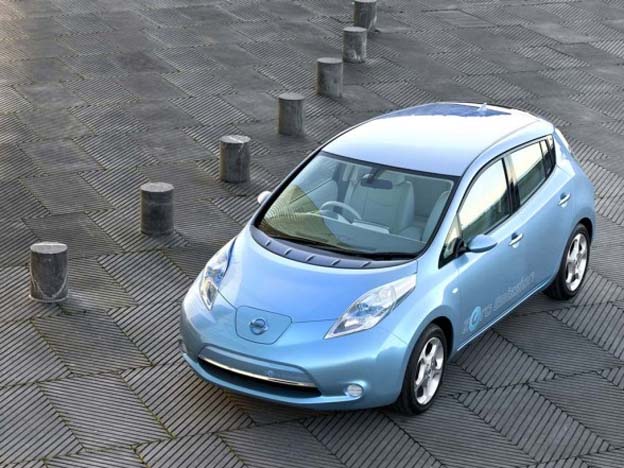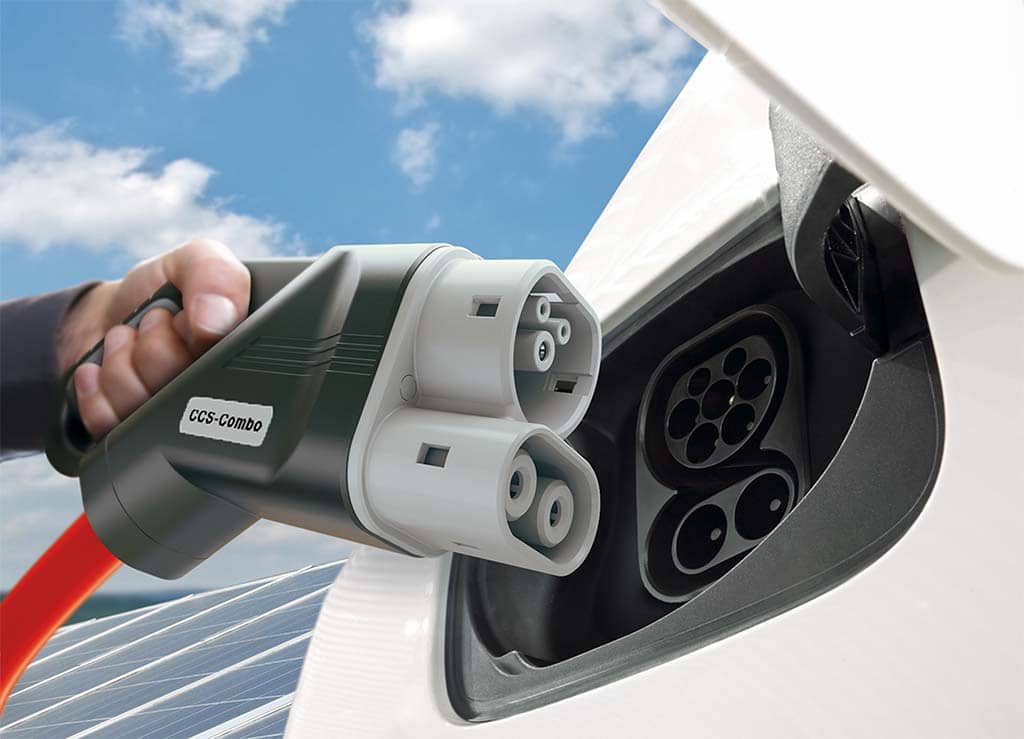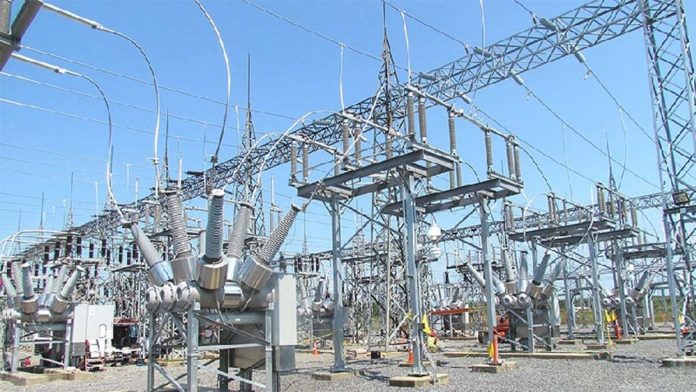With plans to put at least 30 battery-electric vehicles into production by mid-decade, automakers know that potential customers will need to be confident they can find places to plug in — especially if they live in an apartment or home where they can’t install a private charger.
Earlier this month, General Motors announced plans to install 40,000 public chargers around the U.S., many in the rural communities where such devices remain few and far between. And GM isn’t alone. Ford, Volkswagen, Tesla and a number of other automakers have been working to expand the public charging network — which currently totals only about 57,000 plugs — as have charging company startups like EVgo, Electrify America and ChargePoint.
EV sales have surged from 1% of the U.S. new vehicle market in late 2019 to nearly 7% in recent months. And that could top 20% by mid-decade, according to the Car Wars study released by Bank of America Research over the summer. But while setting up a readily accessible network of chargers will be critical to support the “EV Revolution,” one has to look further upstream and ask an even more critical but basic question: is the nation’s electrical infrastructure ready to handle the millions of battery-electric vehicles expected to be traveling our roadways in the years ahead?
Range anxiety
Range anxiety has traditionally been one of the biggest concerns for potential EV buyers. But, with newer models delivering 250, 350, even 500 miles per charge, finding a place to plug in is becoming the more relevant issue, according to John McElroy, a veteran analyst and host of the streaming video program Autoline Detroit.

On the plus side, the bipartisan infrastructure bill passed by Congress in 2021 set aside $5 billion to fund the nationwide rollout, with the Biden administration pushing to have 500,000 public chargers in place by 2030.
“Growing the network of charging stations is critical for EVs to achieve widespread adoption,” said Kelsey Peterson, manager of transportation electrification for Michigan-based utility DTE.
The good news is that the number of chargers is growing fast. There were just 42,000 of them in place in mid-2021, according to federal data. But the downside is that far too many of the ones now in place aren’t working.
Broken plugs
“I’ve had multiple issues with EV chargers while on the road,” said Mercedes Lillienthal, a rally driver and EV fan who has found herself perilously close to running out of electrons while searching for a charger that was in service on several occasions.
A recent study by EV advocacy group Plug In America found about half of its respondents have run into problems using public chargers — with broken ones the most frequent complaint. A controversial study published in early 2022 by the University of California Berkley estimated only 72.5% of the 657 public quick chargers in the San Francisco Bay Area were operational at any given time.

While charging station operators generally downplay the degree of the problem, they don’t deny reliability is an issue. And, if “EV owners continue to experience chargers that don’t work as well as expected, that’s going to slow the EV revolution down,” said McElroy.
Gradual growth
But broken chargers are far from the only concern. The more serious question is whether the U.S. has enough generating capacity and, if so, whether it can get that power to where EV owners will need it, whether home, work or public charging stations.
The general agreement is that the U.S. has enough energy generation capacity to cover EVs likely to be added to the nation’s vehicle fleet through at least 2025, and possibly 2030. But the further out we go — and the higher the share of the new vehicle market EVs become, the bigger the challenge. Local utilities are “rising to the challenge,” claims Trevor Pawl, chief mobility officer for the State of Michigan. And that was echoed by an executive with Consumers Energy who spoke on background.
“The important thing to expect is that EV growth will be gradual. It’s going to come over time which, as long as you’re planning for it allows you to be ready,” said Gary Silberg, a partner and Global Automotive Sector Leader with KPMG. That said, the nation’s electrical infrastructure is being pushed to the limits “even before you throw in electric vehicles,” Silberg added, and “ is going to need a lot of work.”
How much work varies “from region to region, state to state and utility to utility,” said Dave Reuter, chief marketing and communications officer for NextEra Energy, based in Jacksonville, Florida. Without pointing fingers, Reuter worries some providers simply aren’t adapting to what is necessary going forward.
Fire and ice
That’s been highlighted by several recent episodes that have left millions of Americans in the dark — or worse. In California during this past summer’s heat waves, customers faced the prospect of rolling blackouts when demand levels over-stretched energy supplies. In several prior years, harsh winds led to downed power lines that have touched off raging wildfires — one blamed for a massive 2019 blaze in Sonoma County that caused 100,000 people to evacuate and destroyed hundreds of homes.
An early 2021 ice storm in Texas collapsed the state’s electrical grid, leaving millions in the dark for days. Michigan suffered so many storm-related grid failures that year that Attorney General Dana Nessel started leaning on DTE to fix its problems, notably by increasing maintenance of its distribution lines.
The commonly used term, “infrastructure,” is both all-encompassing and a bit misleading. In reality, the electrical grid consists of multiple distinct elements, starting with power generation, as well as transmission from generators to local communities, and then the distribution network delivering power to individual homes and businesses.
Powering up
There clearly needs to be significant new investments in energy generation, and those facilities need to be properly equipped and maintained, experts stress. But there’s been a rapid growth of natural gas generators replacing dirty coal facilities.
And the big surge is coming in the renewable sector, with wind, solar and other, clean alternatives adding gigawatts of capacity. Ford Motor Co. plans to have all of its Michigan operations run by renewables within a few years, as well as the new BlueOval City EV manufacturing complex it’s setting up near Memphis.
But, as the problems in California, Texas and Michigan have underscored, it’s the transmission and network portions of the grid that seem in the worst shape.
An outdated distribution system
“The (transmission and distribution network) is very old, with a quarter of it over 50 years old,” saod Christine Oumansour, a partner in consulting firm, Oliver Wyman’ energy practice. On the plus side, Wyman research suggests American utility companies, along with independent providers who manage transmission and distribution, are investing about $100 billion annually to catch up on what’s going to be needed for the EV era.
While spending on everything from new solar and wind farms to maintaining neighborhood rights of way will be critical, experts say utilities must put in place a more high-tech energy network if they’re to achieve maximum efficiency going forward. The grid of the future is expected to be significantly different from what we have today.
For one thing, there will be the challenge of load leveling power from renewable sources. Winds don’t always blow and solar panels are useless at night. That’s why NextEra Energy installed a 945-megawatt battery storage system, in Manatee County, Florida several years ago. Then the largest system of its kind in the world, it can handle enough power to cover peak load demands for up four hours.
A smarter grid
At a more local level, we’ll likely see smaller storage systems, perhaps down to a few hundred kilowatts providing backup for individual neighborhoods. GM, for one, has been experimenting with so-called “second life” batteries. Pulled when vehicles like the Chevrolet Bolt are scrapped, many automotive batteries are expected to retain as much as 70% of their capacity. Stack up a few in a shed-sized backup unit and you could keep a neighborhood running while repair crews get to work on downed lines.
At the same time, the grid will have to become a lot “smarter,” according to analyst Oumansour and other experts. It will need to learn to detect faults, even predict them before a failure occurs. It will be able to redirect energy when and where most needed. And that will cover everything from the big, high-tension power lines down to individual distribution points.
At the local level, as more and more vehicles go electric, “we’ll have to be able to monitor” and adjust the way that the chargers in a parking structure operate, said R.J. Juliano, the executive vice president of Parkway Corp., the Philadelphia-based firm that is the nation’s largest operators of parking lots and structures. In major cities, where standalone homes are less common, EV owners will have to rely on public charging — whether quick chargers or slower Level 2 systems in facilities like the ones Parkway runs.
But there will be limits to the amount of power that can be delivered in many older neighborhoods, said Juliano. To compensate, companies like Parkway will need load management systems, and chargers able to talk to one another to see how they’re being used. They may collectively — or individually — slow down if they exceed the available power supply.
Vehicle-to-Load
Those chargers could wind up helping to keep the grid running smoothly, taking advantage of the “vehicle-to-load” technology many new EVs, such as the Ford F-150 Lightning, are capable of. The truck’s battery pack can provide power to a home if there’s a blackout, Ford notes. And, in the coming years, it could also push power back into the grid when there’s peak demand, essentially using its battery as a network backup.
And vehicle owners could get paid for providing that power. Owners already can set a limit on how much power can be drawn from their Lightning batteries so they don’t wind up with a dead pack. When demand drops, meanwhile, the vehicle would automatically start charging up again.
The software to manage vehicle-to-grid technology is still in the development stage, but it is expected to become an important feature helping tomorrow’s energy grid meet rising demand as millions of new vehicles go electric.
Straining the system
What’s clear is that the advent of the EV era will both strain and transform the nation’s electrical energy infrastructure. In the short-term most experts believe the existing network can handle what’s expected to be plugged into it. Longer term, however, significant upgrades will be required.
There’ll be a need for new generation capacity, especially from renewables. And both the transmissions and distribution networks will need to become both smarter and more robust. If government and industry start working together now, proponents contend, the transition should be a smooth one. If not, the EV Revolution could come unplugged.

